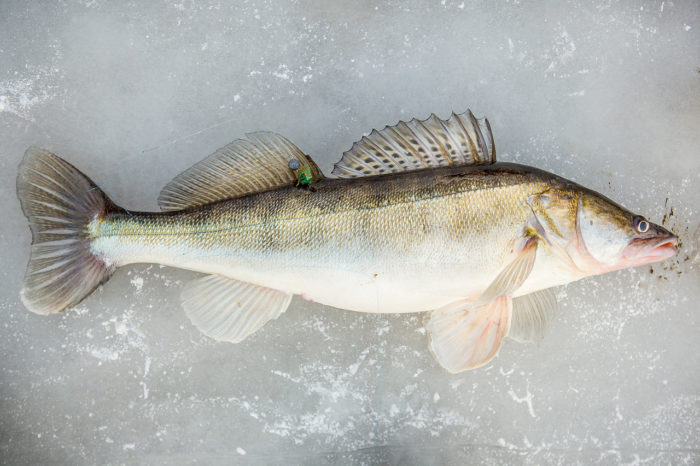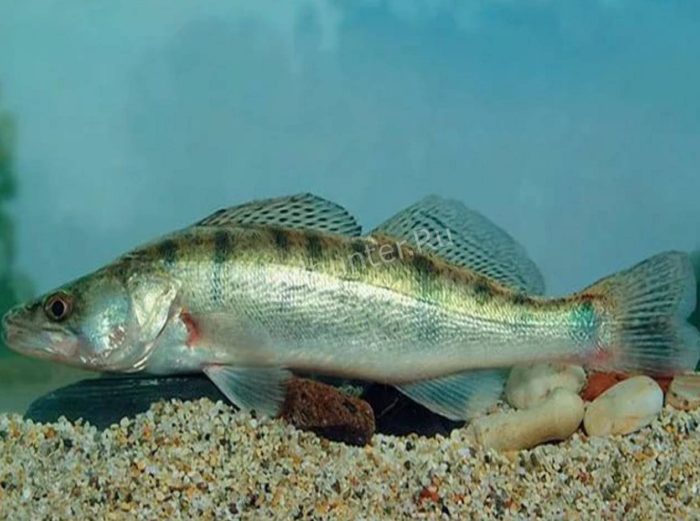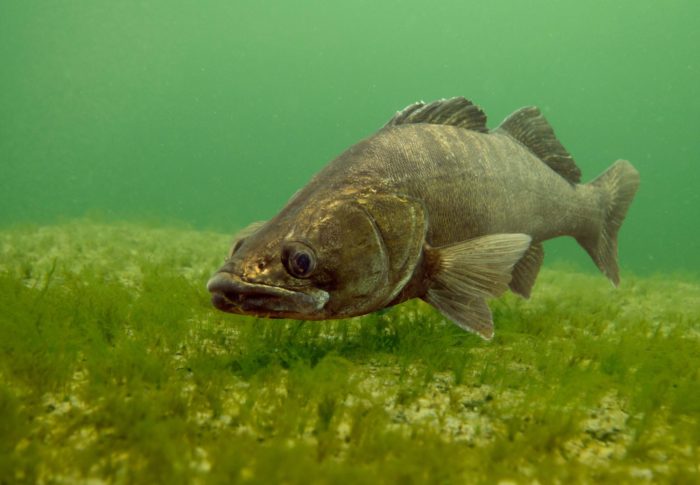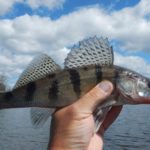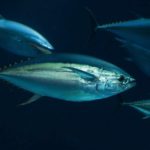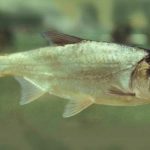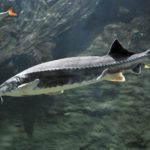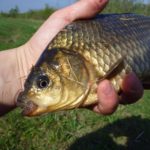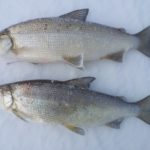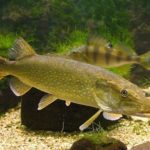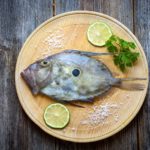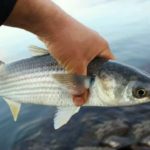Common pike perch is a predatory fish with juicy meat, which is in great demand among consumers. This fish has very high requirements for water quality. It is also voracious, second only to pike in its appetite. Pike perch fillet is famous for its delicious taste, delicate texture and white color with an attractive aroma. Pike perch is considered a valuable commercial fish and is therefore grown in fish farms everywhere.
Description of the fish
Experts say that pike perch originated in the territory of modern Siberia during the Pliocene era.After analyzing the discovered artifacts, it was found that this fish did not undergo any notable changes during its long evolutionary development. This species is found in almost all bodies of water around the globe, regardless of whether the water in them is fresh river or salt sea.
The pike perch is easily recognized by the presence of pointed teeth on its jaws, similar to fangs, which allow it to effectively hold and capture prey. Typically, males have more of these fangs than females, making them a key indicator of sex. Additionally, this fish has many tiny but sharp teeth in its mouth, a common feature among predatory fish.
Main features of pike perch:
- The pike perch's head is flat and elongated.
- Its body is long and laterally flattened, and its mouth has evolved to allow it to open wide.
- Its carcass is covered with small, dense scales, and there are also hard spines on the first outer fin and sharp serrations along the entire surface of the gill cover.
- The dorsal fins are either placed at a distance from each other or remain fused; the first fin is distinguished by spiny protruding needles, while in the second fin only the first ray is spiny, and all the rest remain soft.
- The back of the fish is greenish-gray and the belly is white; There are also eight to ten brownish-black transverse stripes along each side.
- The dorsal and caudal fins are equipped with membranes, all completely covered with dark spots, and the lateral, lower and anal fins have a light yellow tint.
- His eyes are large and bulging - they rotate, so that during a hunt he is able to see almost 180 degrees - both in front and behind him from below or above.
Pike perch weigh up to twenty kilograms with a maximum length of 110-135 cm.
Varieties
Pike perch is not one species, but rather a group of species that make up an entire genus. There are three species of pike perch in Russia: two in fresh water and one in sea water.
Ordinary
This species of pike perch looks impressive - it grows to a length of more than one meter and weighs up to ten kilograms or even more. Experts say this is not the upper limit of their growth. Adult males have large fangs, much larger than those of females.
Lightfeather
This type of fish reaches more than a meter in length and weighs up to twelve kilograms. Its body shape is slightly elongated and slender, the surface is covered with tightly fitting scales. As pike perch mature, they become thinner laterally. Its jaws are lined with pointed teeth. There are two dorsal fins, as well as a notch on the caudal fin that distinguishes it from other animal species.
Depending on the body of water it lives in, its color varies from greenish-brown to mustard-brown or closer to yellow. The underside is usually white or yellow, with a white border running along the edge of the caudal fin.
Volzhsky
The Volga pike perch is relatively small, reaching a maximum length of 40-48 cm and weighing no more than three kilograms. Its external characteristics resemble those of other species of this family, but it is distinguished by the absence of sharp fangs. This species leads a group lifestyle and lives in the Caspian and Black Sea waters.
Canadian
This type of river pike perch is not particularly large, measuring up to 90 cm in length and weighing about 3.9-4.2 kg. Its body is cylindrical and covered with closely fitting scales. The color of the fish is predominantly dark, almost black; on the first upper fin there are small black spots located at an angle.In addition, there is a dark spot on the chest near the pectoral fin, but not on the tail.
Habitat
Walleye have a wide geographic range, extending from Quebec, Canada, to the northern regions of Canada. In addition, it is present in most natural water sources on the North American continent.
Common pike perch is mainly found in freshwater bodies of water in eastern Eurasia, in the middle climatic zone. It is found in the Baltic, Azov and Caspian waters. In addition, other bodies of water, as well as desalinated zones, are also suitable for it.
The Canadian pike perch is a common inhabitant of North American bodies of water, such as the St. Lawrence lake and river system and the natural reservoirs of the Appalachian mountain range.
Sea pike perch, not surprisingly, prefers to live in seas such as the Black and Caspian; those who live in the latter tend to avoid areas with low salinity levels.
How does pike perch live?
Pike perch is a predator of water bodies, and its behavior is largely determined by this fact. Adults of this species primarily consume other smaller fish, while juveniles feed on a variety of invertebrates. The pike perch has such a strong hunter's instinct that sometimes in excitement it even jumps onto land, where it dies.
It should be noted that representatives of the perch family are very dependent on water quality and oxygen levels. Therefore, they will not inhabit bodies of water whose waters are contaminated with sediment particles, which is usually found in swampy areas.
From spring until summer, pike perch can be easily found at a depth of two to five meters. As a rule, they are most active at night, although they can be caught during the day.Thanks to the structure of their eyes, which allows them to see well even in complete darkness, it is easy for them to hunt no matter what time of day or night it is.
After sunset, these fish swim close to the shore and even close to the surface of the water. This period is marked by their “pike-perch fights,” which are accompanied by active splashing, the noise of which echoes above the surface of the water.
During daylight hours, pike perch prefers to stay at depth, settling in places with a hard sandy or gravel bottom. They have a predilection for large underwater objects such as submerged trees, logs or large rocks. These elements are used by fish to find food. This species is also very resistant to various diseases.
The behavior of pike perch differs somewhat depending on its habitat. For example, the Canadian species of this freshwater fish is usually found in rivers, but is also present in lakes and reservoirs. It is known to be sedentary, except when it migrates to designated breeding grounds that are located far from its normal habitat. After spawning, pike perch always returns to its usual body of water.
Does he have any enemies?
In its natural habitat, there are few dangers for pike perch, and it is not the object of close attention of poachers, unlike other fish species. In the wild, they often stay in small groups, which helps protect them from attacks by other predatory fish.
Spawning and reproduction
The timing of puberty will depend on the environment in which the fish lives.For example, walleyes found in cold waters take 7-111 years to reach reproductive maturity, while walleyes found in warmer climates are ready to breed at 2.5-5 years of age.
These fish lay their eggs immediately after the ice melts, usually in July in the northern regions. Caviar develops only under certain conditions with a temperature not exceeding +10 degrees Celsius. Southern populations do not spawn annually, but rather once every two years. Egg laying occurs at night and is distributed over several intervals lasting up to five minutes, with the eggs being deposited in several places little by little. Pike perch is more fertile than other freshwater fish species.
Pike perch eggs are quite miniature, their diameter is usually up to two millimeters. After spawning, the eggs firmly adhere to the substrate, which allows the males to effectively fertilize them. After about five hours they lose their stickiness. Unfortunately, pike perch does not protect its young, so the chances of survival of its offspring are extremely low - only one percent survives to adulthood.
Interesting to know! Spawning of common pike perch, like many other species of fish, begins with the arrival of spring, when the water temperature reaches 8-13 degrees Celsius. In the area of the Azov Sea, this period occurs in April or early May. They lay their eggs in shallow waters that contain many underwater plants and other vegetation. These areas are usually located at a depth of 1 to 4 meters. The eggs produced by pike perch are extremely small and have a yellowish tint. Once they hatch, the fry feed on tiny invertebrates in their early stages of development.
Having reached a size of about ten centimeters, the juveniles completely switch to feeding on the fry of other varieties of fish, because at this moment there are a lot of them in the reservoirs. With this energetic type of feeding, pike perch grow quickly, and already in the second year they gain weight up to one kilogram. By the third or fourth year they are ready to breed. In winter, when it gets colder, pike perch migrate to wintering holes along with other fish species until spring comes again.
Fishing value
Walleye are highly sought after for their tasty flesh, making them a popular game fish. In addition, pike perch is also the object of attention of anglers, both for recreational and sport fishing. This is because pike perch meat is very nutritionally beneficial as it is incredibly low in fat. As a result, some countries have introduced restrictions on the harvest of various species of ray-finned fish, including pike perch.
100 grams of pike perch fillet contains approximately 88 kcal, 18 g of protein, 1 g of fat and 0 g of carbohydrates. In addition, 100 grams of its meat contains various useful elements in the following quantities:
- Iron: 0.3 mg.
- Potassium: 333 mg.
- Magnesium: 25 mg.
- Phosphorus: 206 mg.
- Zinc: 0.5 mg.
- Vitamin B12: 1.3 mcg.
- Vitamin B6: 0.1 mg.
Its meat is recommended by nutritionists, as pike perch contains a lot of useful substances that are beneficial for the human body. Firstly, it is protein, which is the basis for the construction of cells, muscles and tissues. Secondly, these are Omega-3 fatty acids, which help lower blood cholesterol, strengthen the immune system, promote cardiovascular health, and also have a positive effect on vision and brain activity.In addition, the meat of this fish is a good source of B vitamins, which are important for metabolism, nervous system health and improved digestion. Vitamins A and D, also present in meat, contribute to strong bones and healthy skin.
Pike perch has the great advantage that it is practically devoid of small bones, which cannot be said about other freshwater fish. However, there is one drawback - it is difficult to clean, since the scales fit tightly to each other.
How to raise pike perch
Pike perch is a predator, so it can only be bred in open ponds as an additional species. Its main prey are "herbivorous" fish such as carp or silver carp, and zander acts as a scavenger - eliminating sick and weak fish to keep the population healthy.
Only freshwater pike perch can be bred, since marine species require salt water. In addition, this fish species is an ideal choice for artificial breeding due to its fast growth rate, significant weight gain and strong disease resistance.
Pike perch, oddly enough, are gentle creatures, so you should handle them carefully when fishing. If a fish is removed from water with a temperature above ten degrees Celsius, it will die within three to four days. Fish caught in the spring generally do not spawn well in captivity and require special injections to encourage them to reach maturity. It is better for farmers to stock up on spawning pike perch in the autumn-winter season.
For captive breeding, producers weighing one and a half kilograms are chosen, as this is the most optimal option, since larger individuals, as a rule, adapt less well to an artificial habitat.
It is proposed that fish farms maintain their own breeding stock. In the summer, breeders are kept in feeding ponds and supplied with fresh fish, feeding 2% of their body weight daily. In winter, breeders are moved to flowing wintering ponds, where the presence of forage fish is at the level of twenty percent of the weight of the predator.
The prey of pike perch are perch, juvenile carp and roach weighing 8-25 g. Proper feeding in winter is very important for successful spawning; if there is not enough food supply, the females' fertility and fertilization rate will decrease.
Spawning should be carried out so that the eggs can incubate in the most favorable conditions - at a water temperature of 13°C. If the water is too hot, the eggs will mature quickly, but most of these larvae will die soon after hatching.
At a temperature of 13°C, the egg takes about six days to complete the incubation process. To calculate when a mass emergence of larvae will occur, it is worth taking a sample from an artificial nest, placing the eggs in a wide container and observing their development. If all the larvae appear within a few moments of each other, it is worth concluding that a mass hatching will occur in 3-4 hours in the same nest.
On the fourth day after fertilization, the nests are removed from the cages and placed in fry ponds - on poles installed at a depth of half a meter below the surface. One nest usually contains about two hundred thousand eggs, and the distance between neighboring nests is two meters.

